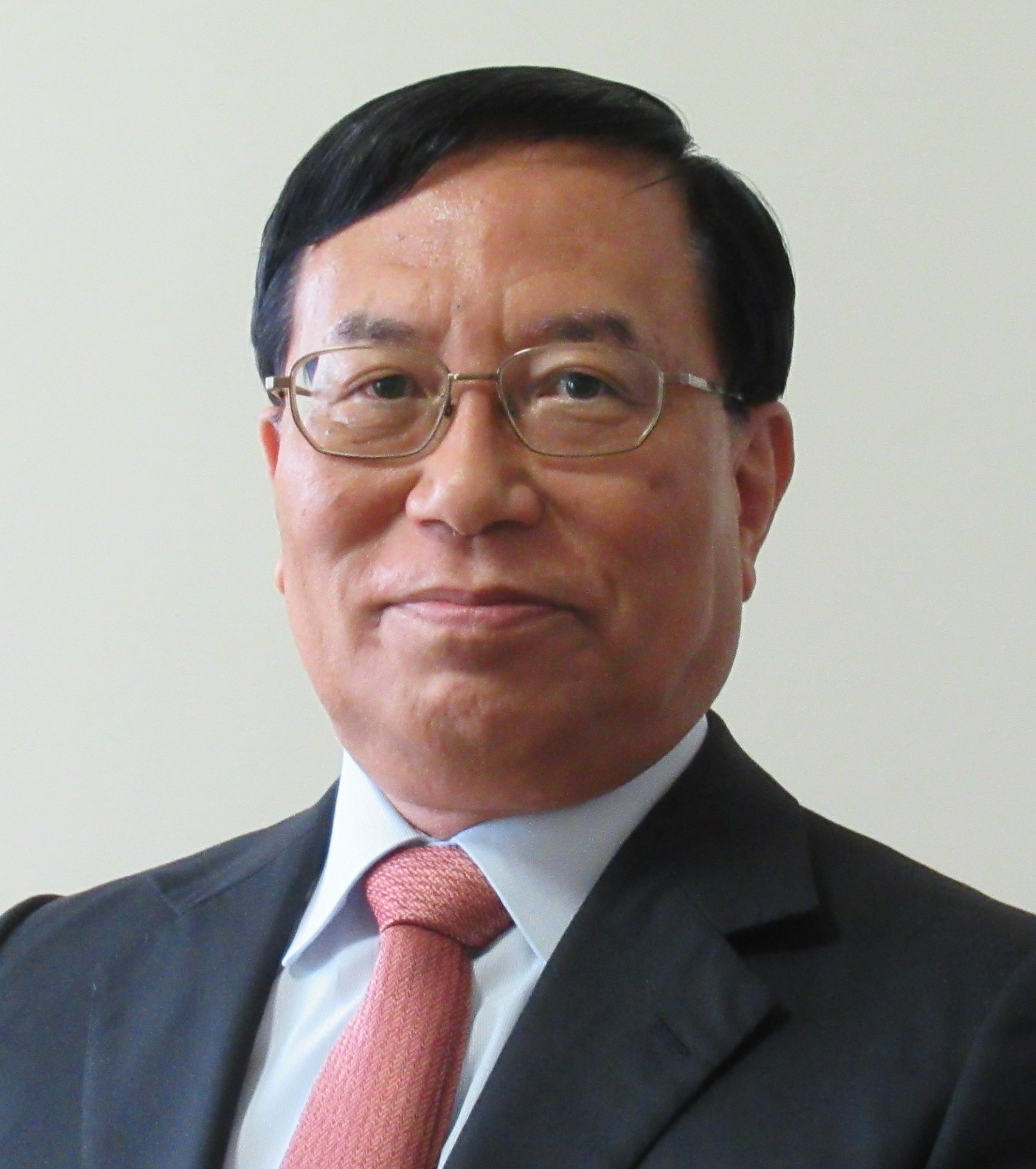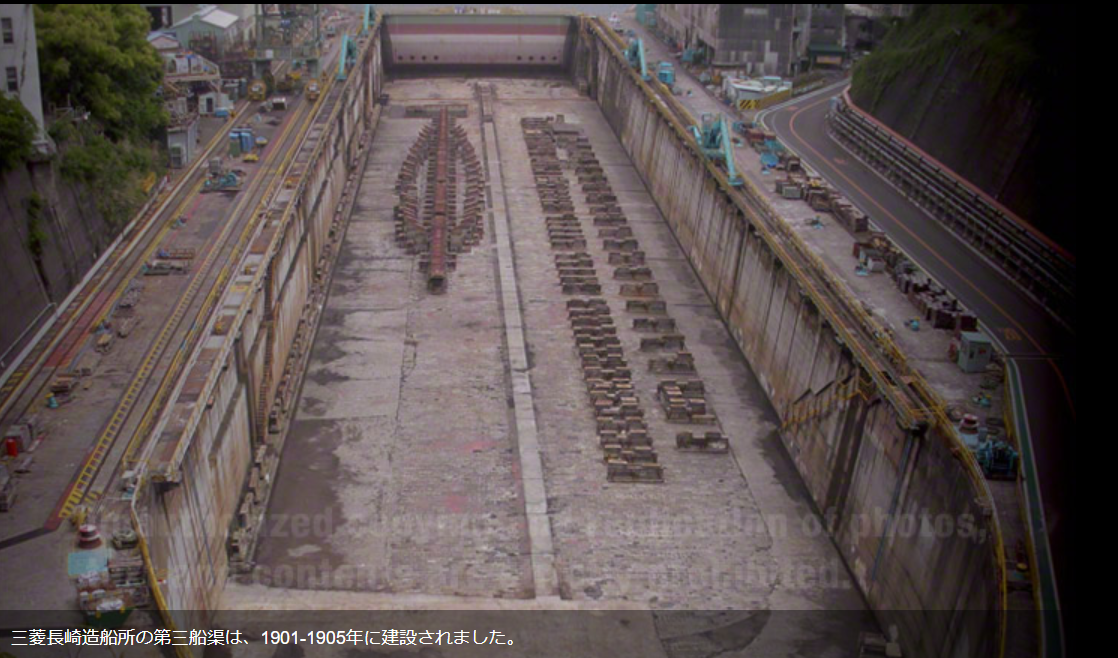PEOPLE
Living now for the future of Japan: The mission of the Sites of Japan's Meiji Industrial Revolution is to raise awareness and courage that "Japan can be saved if we make use of the spirit of our predecessors."

Former General Manager, Nagasaki Shipyard and Machinery Works, Mitsubishi Heavy Industries, Ltd.
1953 Born in Nagasaki City
<Education>
Department of Naval Architecture, Faculty of Engineering, The University of Tokyo
Graduate School of Engineering, The University of Tokyo (Dr. Eng.)
<Professional Career>
1978 Joined Mitsubishi Heavy Industries, Ltd.
2003 General Manager, Shipbuilding Design Department, Nagasaki Shipyard & Machinery Works
2008 Deputy Head of Nagasaki Shipyard & Machinery Works
2011 Senior Vice President, Deputy Head of Shipbuilding & Ocean Development, and Senior General Manager, Ship & Ocean Engineering Division
2012 Senior Vice President, Deputy Head of Shipbuilding & Ocean Development, and Head of Nagasaki Shipyard & Machinery Works
2013 Senior Vice President, Deputy Head of Commercial Aviation & Transportation Systems
2014 Senior Corporate Adviser
2019 Professor, Graduate School of Engineering, Nagasaki University
2023 Special Advisor, Oshima Shipbuilding Co. Ltd.
<Main concurrent positions>
President, The Japan Society of Naval Architects and Ocean Engineers (JASNAOE)
Director, Japan Ship Technology Research Association (JSTRA)
Councilor, Planning and Design Center for Greener Ships (GSC)
Director, National Congress of Industrial Heritage
Visiting Professor, Graduate School of Nagasaki Institute of Applied Science
Living now for the future of Japan: The mission of the Sites of Japan’s Meiji Industrial Revolution is to raise awareness and courage that “Japan can be saved if we make use of the spirit of our predecessors.”
Promptly, practically and pragmatically.
Kato: First of all, thank you for writing an article in the 'Book to Understand Ships', which was published as a guidebook and shipbuilding edition for the Sites of Japan’s Meiji Industrial Revolution. Your commentary, which was given by the director of the department that supervises and operates the facilities at the Nagasaki Shipyard and Machinery of Mitsubishi Heavy Industries, gave us an insight into the current state of the shipbuilding industry in Japan. I was also looking forward to hearing from you today, as you are currently teaching at Nagasaki University, where you are also focusing on human resource development.
Hashimoto: I thank you as well.
Kato: To begin with, regarding the road to World Heritage registration, when I first mentioned the idea of registering the Mitsubishi Shipyard facilities as a component part of a World Heritage Site, there was a big hurdle.
Hashimoto: I think everyone felt it was an honour to be inscribed on the World Heritage List. However, the word 'heritage' tends to conjure up images of something that has already been done, and there were fears that the shipyard might have to cease operations. It is true that some people were concerned that the shipyard would have to cease operations.
Kato: I remember that we did not receive a good response even after we informed them that we were going to register it as operational assets.
Hashimoto: Yes, that was right. At that time, you visited us many times and explained everything in detail. However, at that time, I wondered if there would be any restrictions even if we wanted to keep the assets in operation. … Looking back, the honest truth is that no one really understood what was going on before we could say yes or no.
Kato: How did you take it at that time?
Hashimoto: Even for me, I did not have the knowledge or awareness to understand that it was a World Heritage Site with a story to tell. However, gradually, I understood that this new concept of World Heritage registration was possible, and from then on, I began to talk to people within the shipyard about the possibility of positively considering it. After doing so, there were a great many opinions that if the work done by the Nagasaki Shipyard and Machinery was highly valued, they would be in favour of it.
Kato: In the first place, many people wondered whether the three docks - No.1, No. 2, and No. 3 - located within the Nagasaki Shipyard & Machinery were worth that much.
Hashimoto: Actually, I thought so, too, because they were old docks, more than 100 years old, and used almost exclusively for repair work. So, I did my own research and found a paper about the dock that had been presented to the American Society of Civil Engineers. This made me realize again that it was groundbreaking for its time and of a high technical level; in other words, it had sufficient value as an industrial heritage.
Kato: Everyone on site worked extremely hard to welcome Ms. Sarah Jane from Australia, the ICOMOS assessor. When I saw their enthusiasm for perfectly presenting everything in English, I had a gut feeling that Mitsubishi is an international company and is used to international business contracts.
Hashimoto: We make a lot of technical contracts and technical documents in the run-up to doing a deal. In terms of legal matters, I think we covered as many possible situations as we could imagine in such cases and described them in detail.
Kato: Even when producing CPMs, the Mitsubishi way of writing documents is to make the subject matter clear and the responsibility clear, and this was a great learning experience. CPMs produced by the administration are often passive sentences, and there are many cases where it is unclear what they are trying to say. For example, when the administration takes the initiative and prepares a management and conservation plan based on the conventional way of thinking about cultural heritage, the ideological part of the plan is quite strong, and the vital part of where and to what extent conservation should be carried out is not clear. As I expected, overcoming the walls of the Agency for Cultural Affairs would be even more challenging, and it turned out it was.
Hashimoto: Of course, Mitsubishi had ideological intentions, but it is impossible to give form to a contract of the heart.
Kato: The ideology of the Mitsubishi shipyard is well documented in the company history, and I was able to get a good sense of it from there. However, when I first visited the Senshokaku and the archives, I really felt that Japan still had a history to tell. In any case, I think that it was precisely because we had established and organized an unspoken sense of pride that we were able to quickly, practically and pragmatically work out how to protect it in concrete terms.
Hashimoto: I am glad to hear you say so.

Representative Director, National Congress of Industrial Heritage
(Honorary Advisor, Kyushu Railway Company (JR Kyushu)
Senior Researcher, Industrial Heritage Information Centre
Honorary Advisor, Nippon Mining Co., Ltd.
The Ambassador of Supporting Kamaishi Hometown
Former Director of Nagasaki City World Heritage Office
Former General Manager, Nagasaki Shipyard and Machinery Works, Mitsubishi Heavy Industries, Ltd.
Chairman, Fujisankei Group
Executive Managing Advisor, Fuji Television Network, Inc.
Executive Managing Advisor, Fuji Media Holdings, Inc.
Advisor, Federation of Japan Port and Airport Construction Association
(Ex. Chairman of Specialists Center of Port and Airport Engineering)
Mayor of Nagasaki City
Former Director of the Sano Tsunetami Memorial Museum (currently known as Sano Tsunetami and the Mietsu Naval Dock History Museum)
Director of NPO Association for Thinking about Satoyama
Director of National Congress of the Industrial Heritage
Honorary Chief Priest Toshinari Ueda
Former Mayor of Omuta City
Archaeologist and Heritage Conservation Specialist
A fellow of the Japan Federation of Engineering Societies
Team Member of the Industrial Project Team Office for the Promotion of World Heritage Listing under Cabinet Secretariat
Governor of Kagoshima Prefecture
Mayor of Hagi City
Mayor of Uki City, Kumamoto Prefecture
The Former Employee of Nippon Steel Corporation
An Associate Professor of the Faculty of Science and Engineering in Iwate University
Chairman of the Tourist Guide Association of Misumi West Port
President of Kuraya Narusawa Co., Ltd.
Chairman of Izunokuni City Tourism Association
Director and General Manager of Gunkanjima Concierge
Producer of the Gunkanjima Digital Museum
Owner at Tōge Chaya
Chairman: Mr. Hidenori Date
President: Mr. Masahiro Date
Proprietor, Houraikan Inn
Representative Director of Egawa Bunko non-profit incorporated foundation
The 42nd head of the Egawa Family
Democratic Party for the People (DPP) Representative for Nagasaki Prefecture
President of the NPO, Way to World Heritage Gunkanjima
Representative Director
MI Consulting Group
President of Watanabe Production Group and Honorary Chair of Watanabe Productions Co., Ltd.
Member of the House of Councillors
Governor
Kagoshima Prefecture
World Heritage Consultant
Director and Dean, The Kyushu-Asia Institute of Leadership
Representative Director, SUMIDA, Inc.
Journalist, founder of the Shimomura Mitsuko Ikikata Juku School
Representative, Rally Nippon
Chairman, Sites of Japan’s Meiji Industrial Revolution World Heritage Route Promotion Council Director, National Congress of Industrial Heritage
Representative Director, General Incorporated Foundation National Congress of Industrial Heritage (Advisor, Public Interest Incorporated Foundation Capital Markets Research Institute)
Mayor of Nagasaki City
Policy Director at Heritage Montreal
World Heritage Consultant
Executive Director of Kogakuin University
Heritage Architect and International Consultant
Head of Data Acquisition at The Glasgow School of Art’s School of Simulation and Visualisation
Head of Industrial Heritage, Historic Environment Scotland, Edinburgh
Scottish Ten Project Manager, Historic Environment Scotland, Edinburgh
Mayor of Izunokuni City, Shizuoka Prefecture
Pro-Provost and Chairman of Council of the Royal College of Art. Heritage advisor of Canal & River Trust for England and Wales.
Dean of Tokyo Rissho Junior College
Professor emeritus of Keio University
Mayor of Kitakyushu City
At the 39th session of the World Heritage Committee convened in Bonn, Germany, from June 28 to July 8, 2015, the decision was approved to inscribe the Sites of Japan’s Meiji Industrial Revolution on the World Heritage list.
At a celebratory party held to mark the occasion, some of the primary promoters of the project spoke of their joy in achieving their goal and of the trials and tribulations to getting there.
Director and Managing Executive Officer, Hanshin Expressway Company Limited
Member, Board of Directors, National Congress of Industrial Heritage
Vice-Governor of Shizuoka Prefecture
Mayor of Hagi City
Chairman, Tokyo Metro Co., Ltd.
Mayor of Omuta City
Deputy Director-General, Lifelong Learning Policy Bureau, MEXT
Former Counsellor, Cabinet Secretariat
Mayor of Kamaishi City
Member, Board of Directors, National Congress of Industrial Heritage Counselor, Shimadzu Limited
Chairman of the Consortium for the World Heritage Inscription of Modern Industrial Heritage (Kyushu-Yamaguchi) and governor of Kagoshima Prefecture (as of 2015)